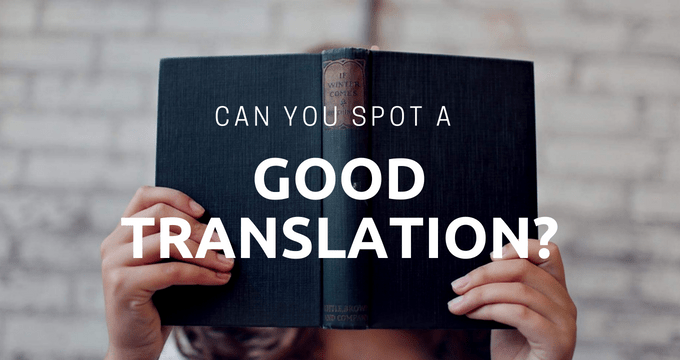
Have you ever been scanning a website or email in your native language and thought, “wait a minute, that doesn’t make sense…”? It’s an unfortunate reality that we live in; companies use poor translations in public-facing ways every day.
Often these inaccurate or insensitive translations are put to use because a company simply doesn’t know better. And, reliance on poorly-crafted machine translations certainly doesn’t help. So, how can you as a brand or organization recognize when the translations you receive are genuinely good? We have a few tricks for how to identify the good from the bad.
In a good translation, the translator remains invisible.
There are no imperfections in a translated text that has been well-crafted. You shouldn’t notice yourself pausing to question if what you just read makes sense because, in a good translation, every word is as it should be. The text should also read flawlessly regardless of the context, and accurately adapt to the language’s nuances, as well as the individual industry’s jargon, specific terminology, and more. Simply put, in a good translation, you’ll have no idea that it is a translated text at all.
In a good translation, the text will affect readers in the same way as the original.
The original flow and feel of the text will always remain in a good translated work. You won’t find yourself questioning if the author used proper verbiage or syntax; you may even find that the natural order in which your native tongue reads is still intact even though that was not the original form. When a text is translated perfectly, it will generate the same feelings or responses in the new output language. In other words, the text should sing, whisper, and hum in the ear like the original text and leaves the reader thrilled, disturbed and amused in the same way as the original source.

This poem, Demain, dès l’aub, is by Victor Hugo, one of the best-known French writers. It is seen here in its original text and translated into English.
In a good translation, the intent of the words and the author’s style is left intact.
A high-quality, accurate translation respects and, therefore, reflects the author’s style and vocabulary. It is sensitive to the meaning, effect, and intent of the original text, but also the best ways to render them in the target language. If you were to read the original text versus the translated text, the author’s intended message should remain. You would not, for example, read the blog or email and come to the end with the questions… “what did they mean by that?” or “what was the tone of that?”
The message should remain as precise as it was in the original language. However, if the original text uses slang or a saying specific to that region when translated the translation should mimic the original but use a similar slang or saying that is analogous in context.
In a good translation, the spirit of the text is conveyed without following verbatim.
A good translation conveys what is written between the lines, without each word having to be exact. For example, in some parts of America people, when addressing a group of individuals, say “y’all.” However, in other languages, there is no translation for this word; instead, you would translate it according to how that specific language addresses a group of people. The translation should capture the spirit, energy, texture, and voice of the original text without slavishly following it to the letter.
In a good translation, the reader is drawn into the piece in their native language.
Just as the original text would captivate the reader, so too should the translation. One should forget the translation exists, you ought to be drawn into the text as if it was written in your native tongue. A high-quality translation is a necessity for those who crave text in their native language. It must not form a noticeable gap between the original and the translated; instead, it must be a seamless flow where the translator appears invisible throughout the text.
Businesses are often times unaware of the effect that the poor-quality translations they’ve shared has on their readers and their reputation. However, there are ways to ensure you receive the highest-quality translation possible. Staying aware of the signs of a good translation will help you to better identify when you come across a bad one. At Language Department, we have a broad network of the best translators for any industry who understand the need for accurate, reliable, and high-quality translations. With a diverse community of language professionals, our translation services are the best choice for receiving the most consistently amazing translations.
Get in touch with our team today to learn more about how high-quality translations can benefit your business, then get set up with the perfect translation team for your next project.




